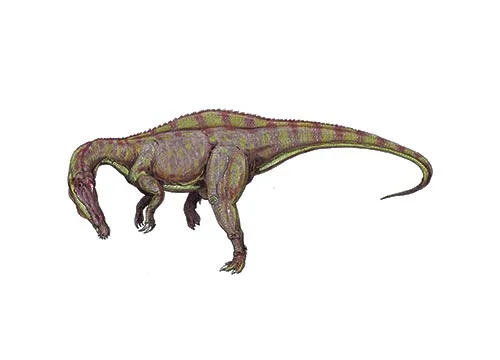Suchomimus (Crocodile mimic)

Su-ko-mie-mus
Paul Sereno et al. - 1998
Piscivore/Carnivore
Estimated 11-12 meters long
Large Theropod
S. tenerensis (type)
Niger - Elhraz Formation
Early Cretaceous, 121-112 million years ago
Suchomimus Facts
Suchomimus was a large theropod dinosaur that lived during the Early Cretaceous period, approximately 121-112 million years ago, in what is now Niger, Africa. Its name means “crocodile mimic,” because it had a long, thin snout similar to that of a crocodile.
Suchomimus belonged to a group of dinosaurs called spinosaurids, which are known for their elongated, narrow skulls and conical teeth that were ideal for catching fish. Suchomimus was one of the largest spinosaurids, measuring up to 11-12 meters (36-39 feet) in length and weighing up to 4 tonnes (4.4 tons).
Suchomimus had several adaptations for its fish-eating lifestyle. Its jaws were elongated and toothless at the tip, which may have allowed it to grasp fish more easily. It also had a sail-like structure on its back, which may have helped it regulate its body temperature, or it may have been used for display to attract mates or intimidate rivals.
Despite its fish-eating adaptations, Suchomimus was still a fearsome predator, and likely hunted a variety of prey, including other dinosaurs and large fish. It may have used its long snout to grasp and hold onto its prey before dispatching it with its sharp teeth.
The first fossils of Suchomimus were discovered in Niger in 1997, and since then, several more specimens have been found, allowing scientists to learn more about this fascinating dinosaur and its place in the ecosystem of early Cretaceous Africa.



